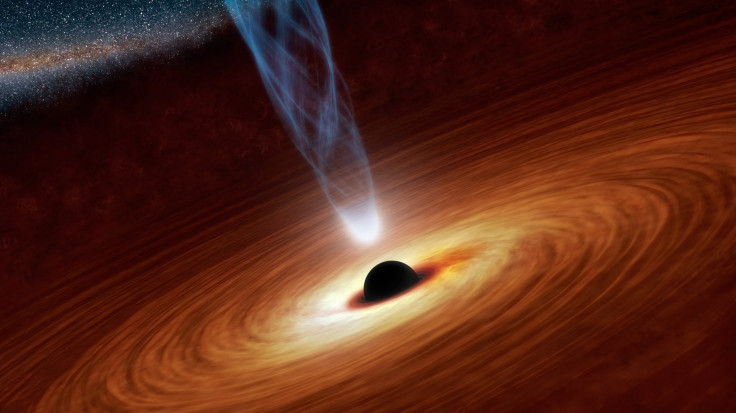Stephen Hawking-Led Study Offers Possible Solution To The Black Hole Information Paradox

The universe as we know it is governed by the laws of causal determinism — causes precede effects and not the other way around. If one knows all the forces acting on an atom, or an agglomeration of atoms, at any given instant, it should, in theory, be possible to not only predict how these entities would behave in the future, but also all their past states.
The laws of quantum physics tell us that everything in the universe is encoded with information about its constituent particles’ quantum states. And for causal determinism to remain inviolable, this information should never entirely disappear.
Black holes, however, muck things up a bit.
These objects — sometimes described as the “vacuum cleaners” of the universe — are bodies that warp space-time to such an extent that nothing, not even light, can escape once it passes the “event horizon,” or the edge of the black hole. Sometimes, they “evaporate” — an event that leads to the complete and utter loss of “information,” or all the physical attributes, of what they’ve gobbled up.
This puzzle, also known as the information paradox, has long stumped scientists, suggesting that there is something amiss with our understanding of reality and how the universe works.
Now, five months after the British cosmologist Stephen Hawking put up a paper offering a solution to the paradox, the study has been published in the peer-reviewed journal Physical Review Letters. In the paper, titled “Soft Hair on Black Holes,” Hawking and his colleagues Andrew Strominger of Harvard University and Malcolm Perry of Cambridge University in the U.K., argue against previous assertions that black holes have no “hair,” which, in this case, refers to low-energy quantum excitations that preserve information about everything that has been swallowed.
Hawking and his co-authors state that charged particles crossing the event horizon could leave traces of themselves in space-time in the form of “soft photons” and “soft gravitons,” which have no energy. These bizarre particles change the vacuum of space-time and allow it to preserve information about the original particles.
This information is then released in the form of "Hawking radiation" — which was initially thought to be a random jumble containing no useful information about what fell into the black hole — when the black holes evaporate.
Although the new study does not entirely resolve the black hole information paradox, it is definitely a promising step toward the solution.
“One can start with a simpler question — what is wrong in Hawking’s original argument that information must be lost? The paper by Hawking, Perry, and Strominger provides a possible answer,” Gary Horowitz, a physicist at the University of California, Santa Barbara, wrote in a commentary. “The researchers demonstrate that when a charged particle falls into the black hole, it excites some of this soft hair. The exact conservation of the new charges implies that when a black hole evaporates, the information about the hair on the horizon must come out in the Hawking radiation.”
© Copyright IBTimes 2024. All rights reserved.






















